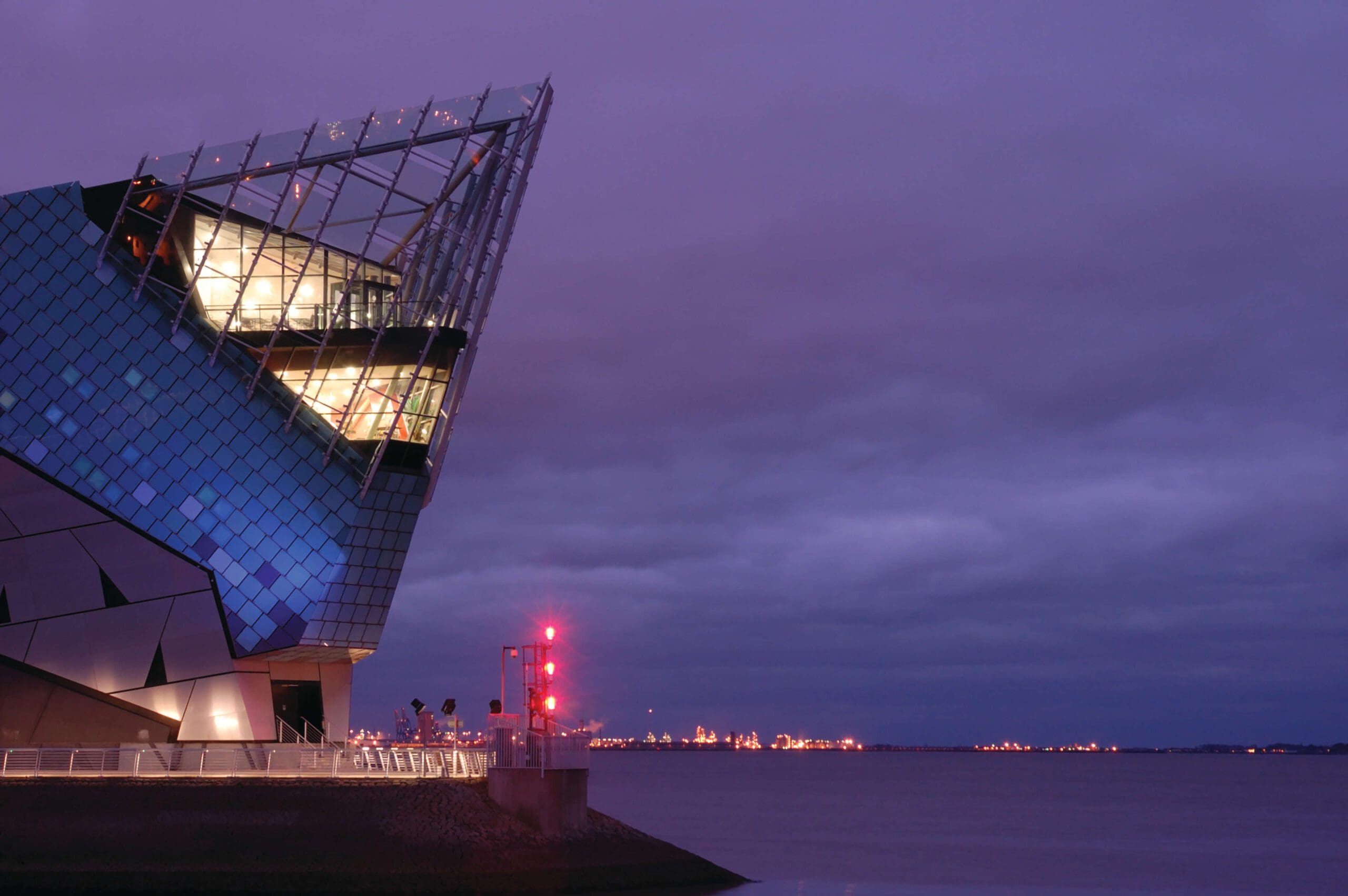18th century
Hull served as a developing distribution hub for manufactured products from Yorkshire’s rapidly expanding cities in the 18th century. Tools and cutlery were shipped along with other goods. Hull received imported raw materials for the industrial towns. Iron from Sweden and Russia was one import. Additionally, lumber, hemp, pitch, and flax were imported for use in shipbuilding. Grain and other consumables were exported.
There were several whalers working out of Hull. Whales were killed for their whalebone and blubber, which were both used to generate oil when melted.
But when the port grew overcrowded, a dock was constructed so that ships could load and unload cargo. At the location of Queens Gardens, it debuted in 1778. It was then located close to the north of the town. The walls around Hull were gradually taken down in the late 18th and early 19th centuries.
Hull was not an industrial hub in the 18th century. Shipbuilding was the sole significant industry. Rapeseed grinding was another business though. They were ground by either horses or windmills. The oil was used to create soap and paint. In Hull, some sugar was refined as well.
Growth in Hull was explosive in the 18th century. The population increased from around 7,500 in the year 1700 to over 22,000 in the year 1800. By the same token, construction on Maister House began in 1744. Suburbs spread outside the city limits in the latter half of the century. Sculcoates, located up north, saw an influx of new residents and businesses. The west side of town saw the construction of new homes in the 1790s.
A group of men were assigned the task of paving, cleaning, and lighting the streets of Hull in 1755 thanks to an Act of Parliament. In the subsequent 60 years, five further acts were approved, expanding their authority even more. Sculcoates received a similar improvement act in 1801, while Trippett and Myton did so in 1810.
William, King of England, 1688–1704, had a monument made in his honour in 1735. Hull’s first theatre opened in 1743, and it was located in Lowgate. It wasn’t until 1782 that the Hull Royal Infirmary first welcomed patients. An activist against the slave trade, William Wilberforce was born in Hull in 1759. His former home is now a museum. Hull College has erected a memorial in his honour as well.
19th century
More than 22,000 people called Hull home during the first census, taken that year. It was a sizable settlement by the standards of the period. The population more than doubled by the year 1900. The southernmost section of the wall protecting the town was torn down around the turn of the nineteenth century. As early as 1813, plans were drawn up for what would become Wellington Street, Pier Street, and Nelson Street.
The present-day Humber Dock was constructed in 1809. Junction Dock, a third dock, was constructed in 1829. Many new homes were constructed in North Myton, South Myton, and Sculcoates as Hull expanded fast.
Hull’s impoverished were able to have access to free medication at a dispensary that first opened in 1814. That’s right: in the same year, too, a facility for the mentally ill was established.
The whaling business in Hull saw a steady decline during the 19th century, and it was completely shut down by the 1860s. Fishing, however, was a thriving industry in Hull. Likewise, the shipbuilding industry increased. Manufacturing processes such as oil grinding and paint making carried on. In the nineteenth century, Hull was also home to a flourishing cotton weaving industry.
During the colder months of the 18th century, oil lamps were used to illuminate the streets of Hull. However, by 1822, Hull had gas-powered streetlights. Even though a power plant went up in 1893, it took decades for electric lighting to displace gas in the public realm. In 1880, Hull became the site of the world’s first telephone exchange. The city of Hull used night watchmen in the 18th century, but it didn’t have a contemporary police force until 1836. In 1887, a group of volunteers formed the first fire department in the area. In 1938, it graduated to the level of a professional occupation.
When it opened in 1860, Beverley Park in Hull was the city’s first public park. The gates to West Park were opened to the public in 1885.
Hull, like many other cities in 1832, had a cholera epidemic. In 1849, there was a second pandemic. In 1873, the Victoria hospital opened its doors to ailing children. A smallpox epidemic in Hull in 1881 claimed the lives of 689 individuals. As early as 1885, Hedon Road was home to a hospital dedicated to treating those suffering from communicable diseases.
In 1861, Hull became home to a renowned art institution, the School of Art. In 1894, the first Technical College opened around the same time as the Central Library first opened to the public. In 1897, Hull gained city status. Meanwhile, in 1869 and again in 1907, the Holy Trinity Church underwent restoration.
20th century
Hull had a population of 239,000 in 1901, and it kept growing. In the meantime, City Hall and the Guildhall were constructed in 1909 and 1916, respectively. Hull was bombarded by Zeppelins (airships) during World War One, and 24 persons were slain in one attack in June 1915.
Amenities in Hull advanced steadily throughout the 20th century. In 1927, the Ferens Art Gallery first welcomed the public. In 1939, a brand-new theatre opened up. Hull’s downtown area underwent slum clearance in the 1920s and 1930s. The western, northern, and eastern parts of the city all saw the construction of many new council homes.
Hull did not have widespread access to flushing toilets until well into the 20th century. Instead, they used “earth closets,” which were essentially just pails with ash placed on top. Ash or soil was thrown over the pail’s contents when the lever was pulled. The contents were removed by men who came at night and loaded them onto a cart. In the early 20th century, in addition to constructing council homes, Hull’s municipal government also upgraded the city’s sanitary facilities by replacing earth closets with flushing toilets.
Hull’s borders were expanded in 1929 to encompass Sutton and a portion of Anlaby. In 1935, the land that had been used as a wharf was transformed into Queens Gardens.
But during the Great Depression of the 1930s, Hull took a major hit. Many men in the shipbuilding business and the dockworker community were out of work. But there were also some cutting-edge industries, like engineering, that were flourishing. About 5,000 homes, in addition to 14 schools, and 27 churches, were lost in Hull during World War II.
Wool from Australia and New Zealand was a major import for Hull in the 20th century. Likewise, wheat was brought in from overseas. Petroleum and wood were also options. In terms of commodities, coal and cotton were the most prominent exports. The fishing industry saw a surge. As Britain’s primary fishing port, Hull ranked as the country’s third-busiest port. In addition, it served as a key hub for shipping and passenger traffic. There were 160,000 passengers travelling to and from Gothenburg, Sweden, and Rotterdam, the Netherlands, in 1970.
Hull’s milling industry flourished in the latter part of the twentieth century with Hull being responsible for the production of oil cake, caravans, excavators, metal crates, and plastic bags.
In 1954, Hull University began its educational mission. The Hull River Tidal Surge Barrier was completed in 1980. Back in 1981, the Humber Bridge was first opened to the public.
Hull’s economy shifted in the late 20th century, with retail and tourism emerging as key sectors. In 1975, the Prospect Shopping Centre opened, and In 1991, the Princes Quay Shopping Centre first opened its doors to the public.
At the same time, in 1989, the Streetlife Museum of Transport was established. The Museum of Hull and the East Riding of Yorkshire first welcomed visitors in 1997. It wasn’t until 1999 that the Arctic Corsair, a trawler that had been renovated, reopened to the public.
21st century
Hull’s Deep aquarium first welcomed guests in 2001. In addition, certain areas of Hull underwent regeneration towards the turn of the millennium. Opening in 2007 was one of Hull’s newest attractions, the St. Stephens Shopping Centre. In 2007, the United Kingdom also saw the debut of Vue Cinema, its first digital theatre. Meanwhile, along the waterfront, a new commercial zone called Humber Quays was developed. In 2008, it became home to the World Trade Centre Hull & Humber.
Hull was chosen as the UK’s City of Culture in 2017. As of this year (2019), there were 261,000 people living in Hull.





